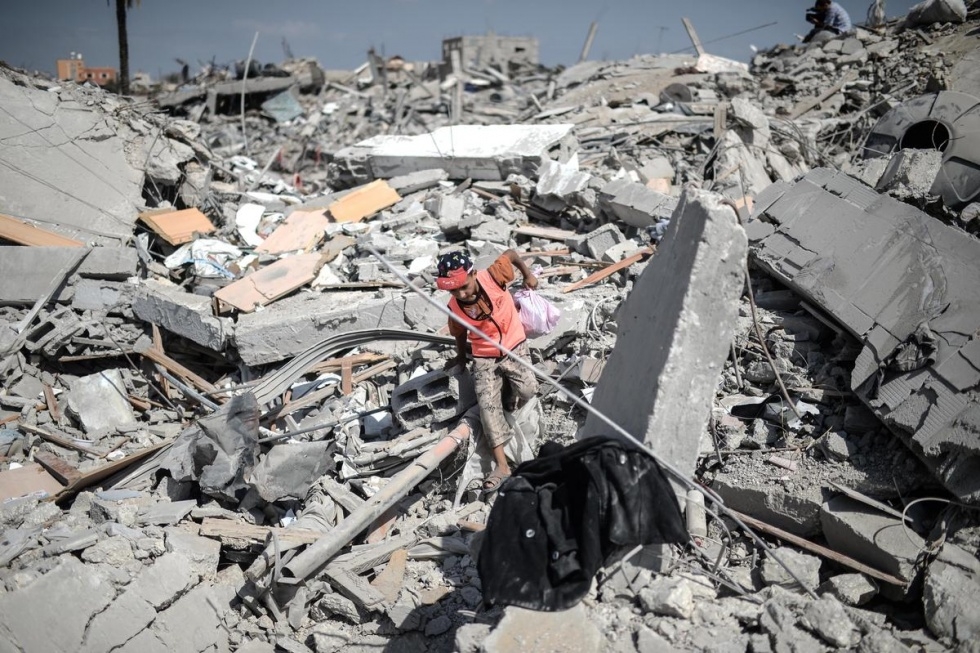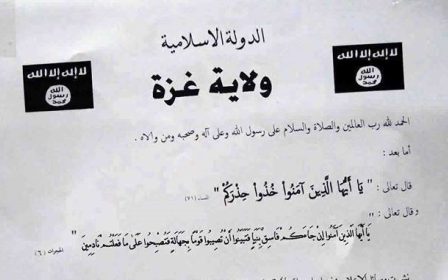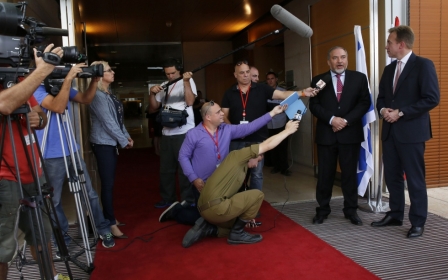Gaza reconstruction: The new Israeli strategy

The Israeli military has arrived at the conclusion that its near-total blockade of the Gaza Strip “has done more harm than good”, Israeli website Ynet - the online presence of daily Yedioth Ahronoth - reported on Friday.
The report listed the details of what veteran military correspondent Ron Ben Yishai described as Israel’s comprehensive plan for the Gaza Strip in the wake of the summer’s war.
According to Ben Yishai, who relies throughout the piece on unnamed military and government sources in Israel, the new strategy represents a decisive shift away from the idea of negotiating an independent state for the Palestinians and toward a tightly monitored “conflict management” approach. Under this approach, Palestinians will be allowed greater freedom of movement and greater autonomy, but under close Israeli and international surveillance.
Contrary to a United States view that a swift resolution for the Israeli-Palestinian conflict would stabilise the region and allow for a closer alliance between the US and “moderate” Arab states, the report cites Israeli officials who believe an independent Palestine would destabilise the region further, pointing to Gaza and the recent war there as an example of what becomes of a territory released from Israeli control.
As for the so-called moderate Arab states, the report asserts, they have now come under such direct threat from Islamic State and internal instability that they don’t need any more persuading to rally to the side of the US and Israel.
According to Ben Yishai, the new strategy aims to prevent future escalations in the Gaza Strip, or at least stretch out the lulls between them to a maximum, by removing some of the political and economic incentives for renewed struggles against Israel.
To that end, the Israeli government has quietly withdrawn its objections to the Palestinian unity government - despite openly trying to undermine it earlier this summer through sweeping West Bank raids that helped spark the latest Gaza war.
Under the new plan, Israel would not only support the unity project, but encourage a Palestinian Authority presence in, and control of, the Gaza Strip itself. It hopes to grow this presence well beyond the PA controlling the Strip’s border crossing - as is at present envisioned in the ongoing long-term ceasefire negotiations, and which we could see as early as this Sunday.
When this happens, Israel would also lift restrictions on many of the goods entering Gaza Strip, in a move Ben Yishai says was recommended by the military long before the latest war.
The details of the emerging agreement are credited to what Ben Yishai calls “The Quintet” of negotiators: chief of Egyptian intelligence General Mohammed Tohami; director of political-military affairs at the Israeli Defence Ministry Major General Amos Gilad; coordinator of government activities in the territories Major General Yoav Mordechai; Prime Minister of the Palestinian Authority’s interim technocratic government Rami Hamdallah; and UN envoy Robert Serry.
Drone-supervised construction sites
The report lists the known components of the agreement as follows.
Firstly, the security arrangements will closely resemble the ones agreed (but never implemented) after the November 2012 operation “Pillar of Cloud”, with the notable addition of the expansion of the fishing zone to six nautical miles.
Secondly, construction materials will be pre-ordered through Israel, where Israeli teams of engineers will have to approve exact quantities of materials for each specific project. The materials will be ferried in to Israeli-authorised international organizations, who will store them in special facilities under 24-hour CCTV supervision, with footage accessible to Israel.
The reconstruction sites will then be monitored by Israeli drones, to make sure no materials are used for any other purpose and that each bit of materiel is accounted for.
Private homes will be rebuilt by private but also Israeli-vetted Gaza contractors, who will manage the construction materials through special software accessible also to Israel, and whose works will also be monitored by drones.
The plan will include extensive freedom of movement within and between Gaza and the West Bank, except when “security considerations” come into play. The new arrangements for goods entering the Strip also include a complete ban on metal pipes - only plastic pipework will be allowed, for any purpose - and further bans on just about any tools or machinery for working metal.
From prison camp to a dystopian Supremax
There is a bittersweet pleasure in seeing the army give up on the siege, and the government u-turn on its rejection of a Palestinian unity government, both essentially adopting the positions of the Israeli civil society and political Left (even if eight years and yet another horrible war too late).
Yet the postwar reality sketched out by Ben Yishai still makes for an overwhelmingly depressing read. True, the influx of construction material and other goods into the Strip will doubtless be a great relief to the artificially starved Gazan economy. But the tight, almost dystopian new controls envisioned in the plan underline Israel’s approach to the Strip as being first and foremost a gigantic prison - only it is being upgraded from a third-world prison camp to an American cutting-edge SuperMax facility. Much of the more tantalizing promises should be taken with a heap of salt: complete freedom of movement except where security concerns are raised is pretty much what Gazans enjoy today; it just so happens that all of them, together and apart, are seen as security concerns.
And the political engineering - the shift from trying to undermine the unity government to trying to push it along faster than it would have gone otherwise - also does not seem particularly promising. The plan ignores, for instance, the steep rise in Hamas’s popularity after the war and the pressure on the Palestinian Authority to be as combative as Hamas, not on Hamas to be as pliant as the Palestinian Authority.
Last but not least, whether it gets to control aspects of Gazan life or not, the Palestinian Authority is quickly running out of shelf life; putting it in charge of border crossing subject to Israeli and Egyptian demands will more likely make them subcontractors and lightning rods for the occupation - the two main roles they are playing the West Bank today.
The plan touted in Yedioth is obviously not a long-term solution for the Gaza Strip. But then again, it’s not meant to be. As Ben Yishai himself says, the idea is conflict management; or rather, conflict maintenance: grounding the Palestinians with struggles for the small necessities while Israel continues to redraw the big picture.
Middle East Eye propose une couverture et une analyse indépendantes et incomparables du Moyen-Orient, de l’Afrique du Nord et d’autres régions du monde. Pour en savoir plus sur la reprise de ce contenu et les frais qui s’appliquent, veuillez remplir ce formulaire [en anglais]. Pour en savoir plus sur MEE, cliquez ici [en anglais].





